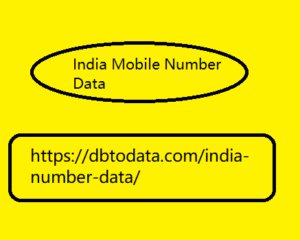Post by account_disabled on Mar 10, 2024 4:21:53 GMT -5
There are metrics that are used by companies without having a clear idea of the consequences, light-heartedly. It might seem exaggerated but, if you think about it, the metrics we adopt, in addition to allowing us to interpret reality, shape it because they stimulate a manager's action that has an impact, positive or negative, on the company. The problem is that when there is no way, or there is no simple way, to measure a complex phenomenon, the marketer invents the most imaginative ways to do it.
And all the others follow the shortcut discovered by India Mobile Number Data those who seem smartest (but often they are only the most motivated, sometimes they are the marketers of the companies/agencies/tech companies that provide products and services to companies). Assuming that marketers have left likes and followers behind, we see some of these dangerous or at least slippery metrics, which should be handled with care. Advertising Value Equivalent (AVE) : it is the metric on which public relations work is based. The task of what was once called the press office is to build relationships with journalists and build news worthy of being published.

The result of the action is given by the press coverage, i.e. the number of articles published in the various media (newspapers, web, radio and TV). But the simple count of releases does not offer enough impact numbers that can be flaunted at the top to justify spending on PR. So someone invented the AVE. A metric that would be used to calculate the equivalent value of an advertising investment. In practice, for each article we calculate the surface area occupied in the newspaper and check how much it would have cost if it had been purchased for an advertisement. Same reasoning for radio and TV releases, but here the equivalent time of an advert is calculated. The solution is ingenious but there are two problems.
And all the others follow the shortcut discovered by India Mobile Number Data those who seem smartest (but often they are only the most motivated, sometimes they are the marketers of the companies/agencies/tech companies that provide products and services to companies). Assuming that marketers have left likes and followers behind, we see some of these dangerous or at least slippery metrics, which should be handled with care. Advertising Value Equivalent (AVE) : it is the metric on which public relations work is based. The task of what was once called the press office is to build relationships with journalists and build news worthy of being published.

The result of the action is given by the press coverage, i.e. the number of articles published in the various media (newspapers, web, radio and TV). But the simple count of releases does not offer enough impact numbers that can be flaunted at the top to justify spending on PR. So someone invented the AVE. A metric that would be used to calculate the equivalent value of an advertising investment. In practice, for each article we calculate the surface area occupied in the newspaper and check how much it would have cost if it had been purchased for an advertisement. Same reasoning for radio and TV releases, but here the equivalent time of an advert is calculated. The solution is ingenious but there are two problems.
